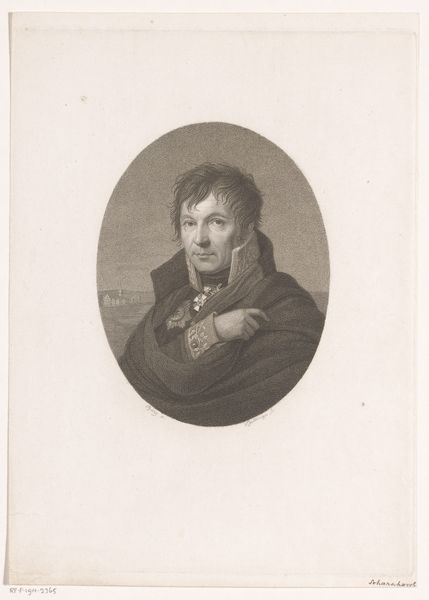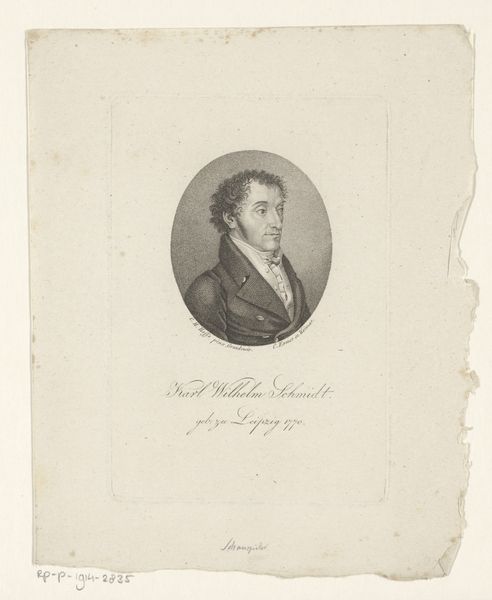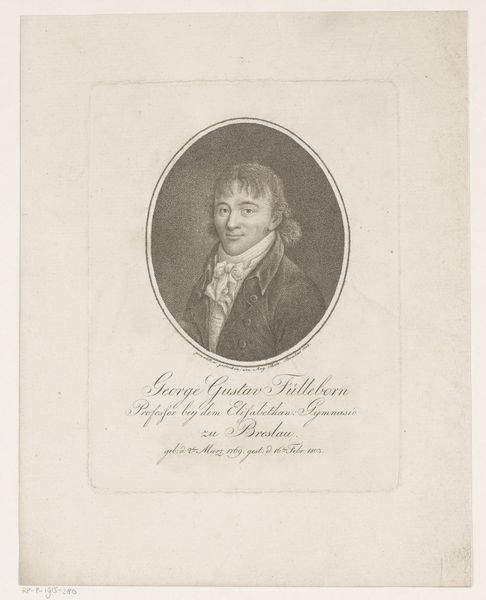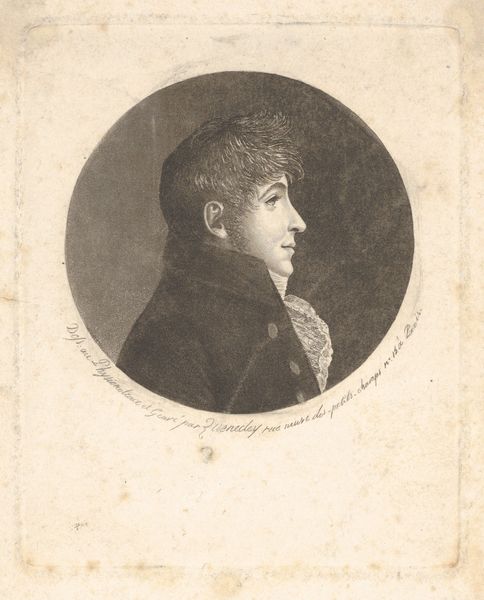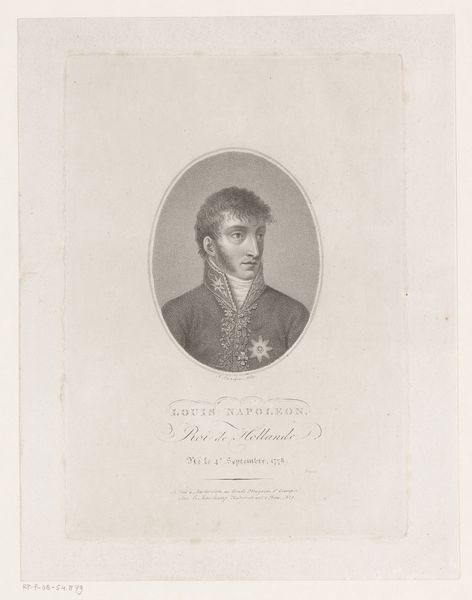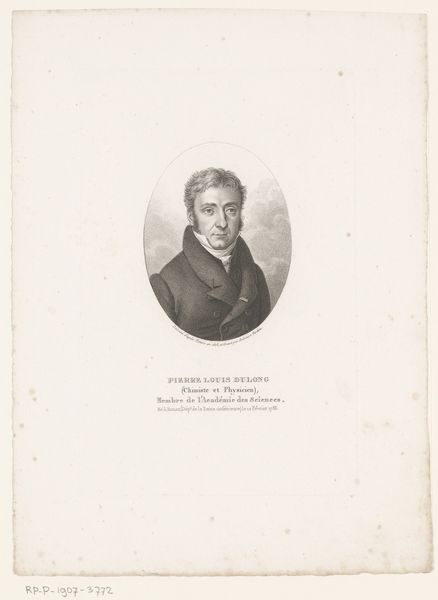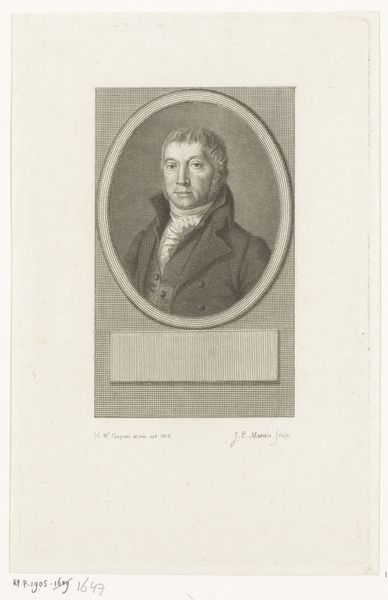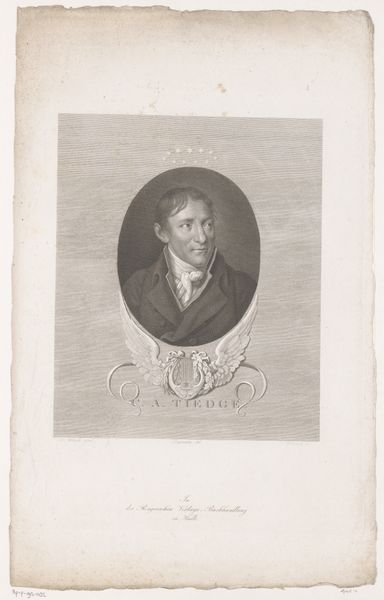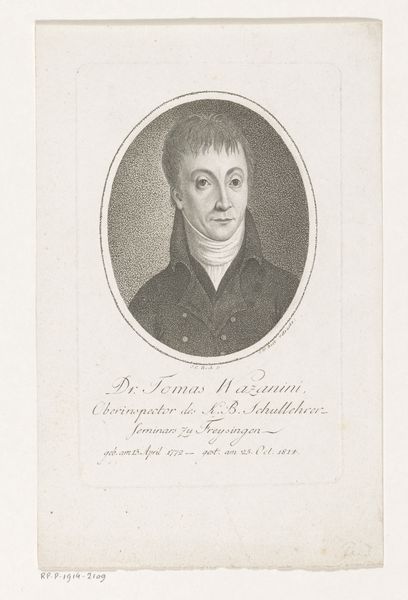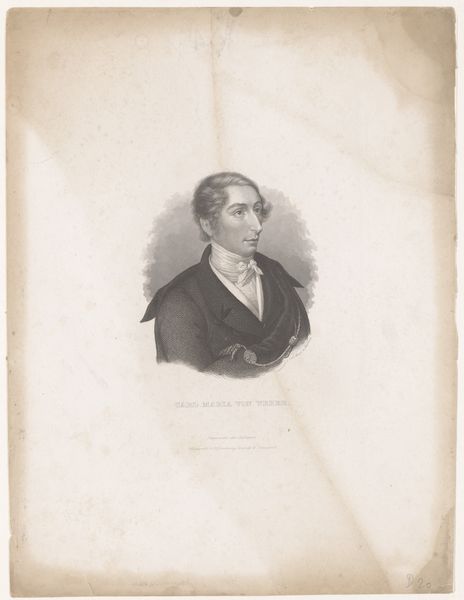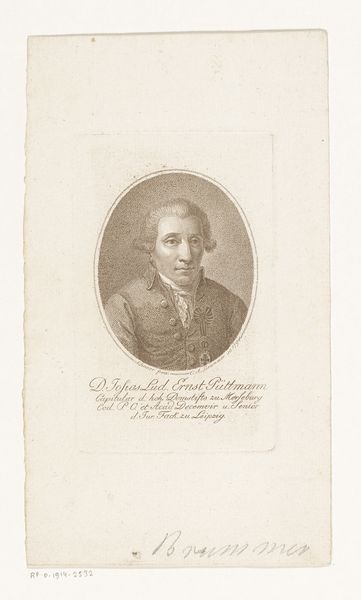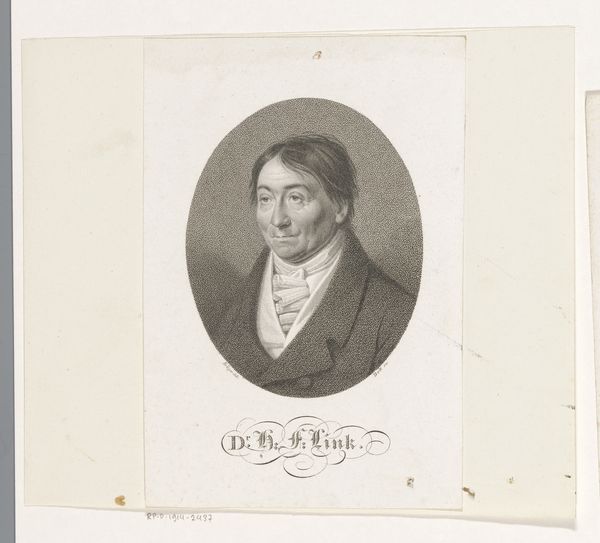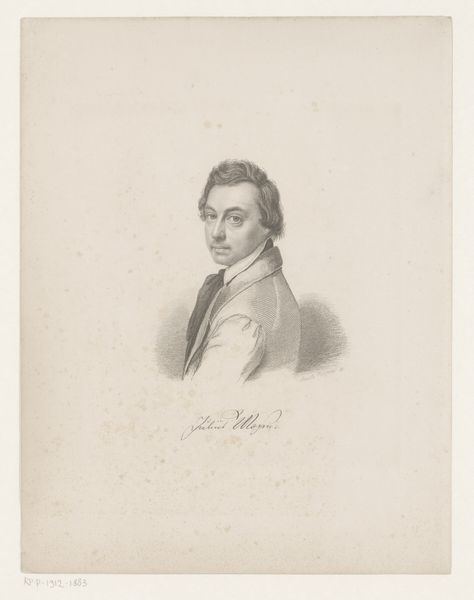
paper, engraving
#
portrait
#
pencil drawn
#
old engraving style
#
paper
#
pencil drawing
#
engraving
#
realism
Dimensions: height 150 mm, width 98 mm
Copyright: Rijks Museum: Open Domain
Curator: Here we have Carl Mayer’s "Portrait of Johann Daniel Walther," dating roughly from 1819 to 1868, currently residing here at the Rijksmuseum. Editor: It’s…striking in its austerity. The greyscale engraving and simple composition lend a sense of formality. Very of its time, wouldn’t you agree? Curator: Indeed. It’s tempting to think about the economics of portraiture in the 19th century. Engravings made duplication possible, circulating images and solidifying social status for folks like Walther. Editor: Absolutely. The inscription tells us Walther was a member of the "inner council" of Rothenburg. A local worthy, clearly, whose image was meant to project authority and respectability. How would an engraving like this be commissioned and circulated in the community? Did local workshops or guilds play a part? Curator: The artist would need access to tools, paper, a printing press…the level of craft involved. Were these images aimed for bourgeois consumption, adorning parlors as badges of honor within the city? Editor: I think it also signals something of the social ambitions of the rising middle class. Printed portraits like this provided access to a kind of visual prestige traditionally reserved for the aristocracy. It becomes about democratizing visual culture. Curator: It suggests a shift in how power and status were visualized and disseminated. No longer exclusive to oil paintings displayed in wealthy homes, but multiplied through relatively accessible printmaking techniques. We see new material relationships taking place, altering hierarchies… Editor: Considering this shift in image making makes you consider access in all arenas of society. The political implications of mass media. It brings up complex dynamics about the production, distribution, and, of course, reception. Curator: Well, considering the material nature of this work, its existence offers a peek into its period. How class was consumed and projected…fascinating. Editor: It truly is. By considering the portrait, we uncover a historical context— the very fabric of the 19th century.
Comments
No comments
Be the first to comment and join the conversation on the ultimate creative platform.
